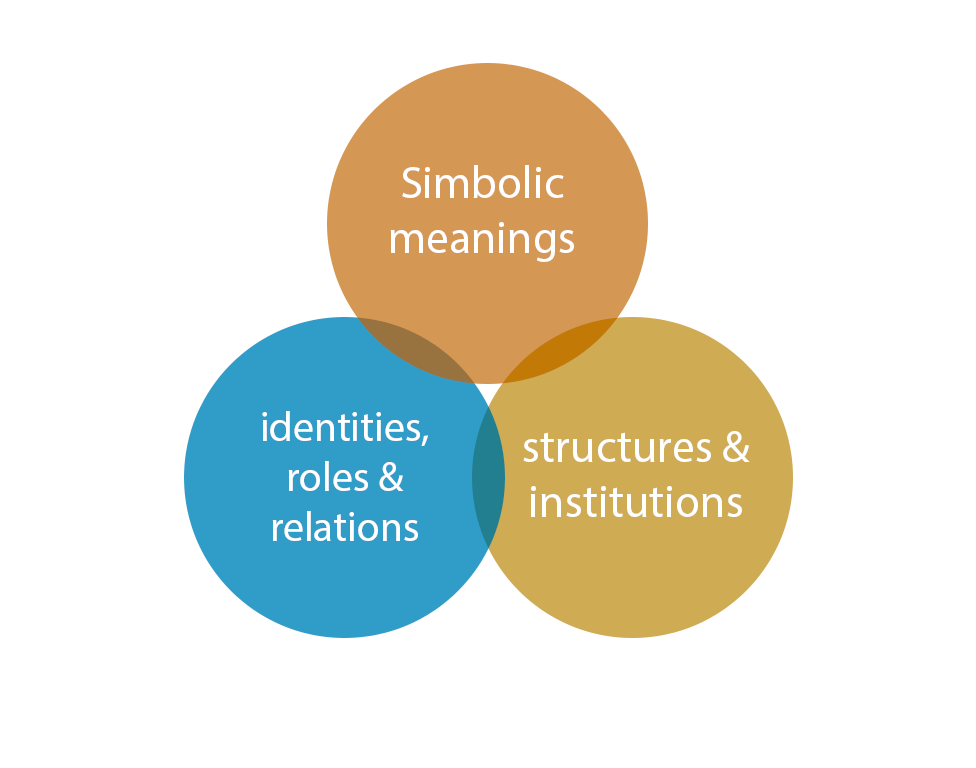Gender ≠ Women
The term gender remains very often misinterpreted and ambiguous. When used as a synonym of women, there are a few constitutive elements emerging that can be problematic. Firstly, as a consequence of this misunderstanding, men are viewed as a ‘default category’, as outsiders of any considerations of gender. Secondly, in the field of peace and security the limitation of this conception can undermine men’s efforts as agents of peace and women’s agency in participating in political contestations that involve violence, for example.
To avoid any ambiguity, gender has to be understood as a social construction, rather than determined by biology, as a framework of values that are changeable from time to time, from context to context, and that are attributed to both men and women[1]. But gender is not simply understood as a framework of values; it is also a system of power, ‘encompassing gendered selves, institutions, and symbolic meanings’[2].

Gender Identity
For philosopher and gender theorist Judith Butler, gender identity is the performative aspects of gender [3]. Put differently, this relates to how we conform, reinforce and resist social definitions of masculinity and femininity; how roles, tasks and expectations are attributed to individuals. For instance, in times of war, men are the first figures to be recruited.
Gender and power relations
As a set of roles, values, behaviors and attitudes, gender shapes the distributions of power in different levels and hierarchies, from the private to public sphere, from the household to political decision-making processes[4]. For example, structures and institutions (schools, church, enterprises, etc) shape the distribution of power by reinforcing and relying on gender roles[5] - Men are very often placed in high positions, while women are paid less.
Masculinity and femininity
Socially prescribed roles and functions attributed to men and women. For example, peace is associated with femininity while war with masculinity.

A new way of looking at conflict prevention: gender awareness in peace and security
According to those two UNSC Resolution and experts in the field, including a gender perspective in conflict analysis and in efforts to counter violent extremism can help:
- Enhance situational analysis by providing a socio-cultural lens on power relationships, including race, class, poverty level, ethnicity and age, as well as different needs and expectations for both women and men[6].
- Reveal context-specific particularities and examine how dynamics have changed over time.
- Break up with stereotypes and notions of women and men, whereby women are peaceful and men fight and make decisions[7].
- Increase the effectiveness of the policing and project implementation on strategic levels[8].
Among the many categories of power relations, paying a greater attention to gender help identify these other social classifications, such as race, age and class. As gender strongly intersects with these systems of power, a better understanding of it consequently enhances awareness of the others, which altogether improves the overall effectiveness in analysis.
As recognized by UNSCR 2242[9], without a comprehensive knowledge of all these elements in a context-specific perspective, our understanding of the many peculiarities of violent extremism, especially its structural causes, will be hindered, which will thus limit responses and strategies to counter it[10].
Reaffirms the important role of women in the prevention and resolution of conflict, while stressing the relevance of including gender perspective in all UN’s peace and security efforts.
Recognizes the important role of women in counter-terrorism efforts and in the resolution of political violence and violent extremism. It also urges Member States to integrate a gender analysis into the drivers of violent extremism and its different impacts on both men and women.
“Integrating gender means understanding the underlying dynamics of inequality, the situation of men and gender minorities, and the links between notions of gender and violence” Conciliation Resources
In this sense, men should also be recognized as a gendered being, whose roles and identities are socially shaped from time to time. Thus, gender norms equates with norms for both women and men. As Kuehnast and Sudhakar highlights ‘focusing on only one side of the gender equation overlooks the relational quality (that is, the power dynamics between and among men and women) and provides incomplete understanding of gender issues in the context of conflict and peacebuilding efforts’[11].
It is essential therefore to overturn commonly held assumptions about gender and recognize how social norms and constructions shape both men and women’s social interactions in violent extremism. This will inevitably require a gender lens that seeks to explore the drivers as well as the roles of men and women in acts of violent extremism. In the next section, we will explore the drivers of violent extremism and its different frameworks of classification.

